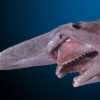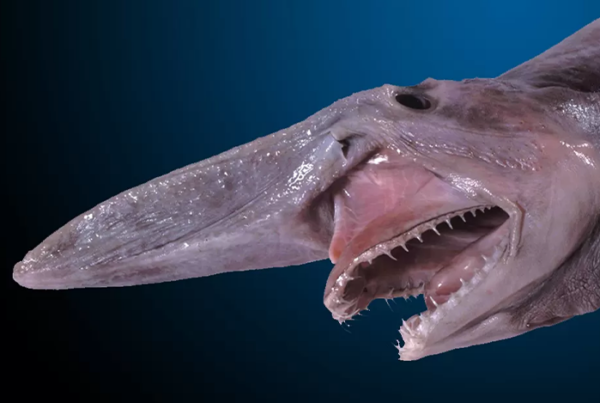Discovery highlights need to create a marine “superhighway” connecting the two UNESCO World Heritage Sites
Scientists uncovered a new example of migratory movements between Galapagos Marine Reserve and Cocos Island National Park on a research trip this year, supporting global efforts to improve the conservation of migratory marine species. The research
trip was supported by philanthropist and ocean advocate, Dona Bertarelli, and her family. The discovery is featured in a film by Sails of Change & Only One Collective which urges viewers to sign a petition calling on the governments of Ecuador, Costa
Rica, Colombia, and Panama to establish the world’s first multinational network of marine protected areas. A female tiger shark – tagged on an expedition led by non-profit organization OCEARCH with MigraMar, Galapagos National Park Directorate and Charles Darwin Foundation scientists in Ecuador’s Galapagos Islands seven years ago – surfaced at Costa Rica’s
Cocos Island in February, almost 700 kilometers to the northwest. This is the first time a tiger shark has been recorded moving between the two marine protected areas.
“It has become clear that the previous target of protecting 10% of the world’s ocean is simply not enough, and that there needs to be a more ambitious and effective goal to protect at least 30% by 2030” said Dona Bertarelli. She continued, “The information brought to us by this tiger shark adds to the growing body of science that can inform countries deciding where protections need to be placed.”
Ecuador and Costa Rica are both members of the Global Ocean Alliance, which calls for 30% of the ocean to be protected by 2030. The tiger shark joins a growing list of species that have been documented moving between the Galapagos Marine Reserve and Cocos Island National Park along a marine superhighway known as the Cocos-Galapagos Swimway. Other species include green and leatherback turtles, as well as hammerhead, silky and Galapagos sharks. In late 2020 a whale shark was also tracked to Cocos after being fitted with a satellite tag in Galapagos.
Scientists of the MigraMar network and their partners have been studying sharks, sea turtles and other large marine species in this region for over a decade by placing satellite and ultrasonic tags on individual species to track their movements. Ultrasonic tags emit a high frequency signal, which is unique to each tag. This signal is recorded by an array of underwater listening stations when the tagged animal comes within range (200 m). Data downloaded from receivers can be shared through agreements among
users globally through the Ocean Tracking Network.
“At Cocos Island we have an array of seven receivers, which has allowed us to really understand how different species interact and utilize the coastal waters around the island,” said Randall Arauz of Fins Attached, who initiated this research project in Cocos
Island in 2005.
“Many endangered marine species are migratory, and become vulnerable to fishing gear
as soon as they cross outside the marine reserve,” said Dr. Alex Hearn of MigraMar and
Universidad San Francisco de Quito-Galápagos Science Center. “In this case, many of the
movements appear to follow the underwater chain of seamounts that link the two
reserves – we call it a swimway.”
While on the research trip in early 2021, Dr. Hearn was undertaking a routine download and maintenance of the receivers at Cocos Island.
“I tend to scan through the tag IDs as they come in, because it’s always exciting to see reports of animals that we tagged years ago. That evening, I noticed a familiar tag code, and after checking in our database we realized it was a tiger shark that we’d tagged in Galapagos in January 2014. It was a big moment – the first example of a tiger shark moving between the two marine protected areas.”
During the 2014 OCEARCH expedition, four tiger sharks were tagged for the very first time in Galapagos. One of them, a 2.74 m female nicknamed Yolanda, remained in Galapagos for almost four years, but had last been detected in October 2017. However,
the data recently obtained from the Cocos receiver array showed that she visited the island for a period of three weeks in November 2020.
“This shows, yet again, the high degree of biological connectivity linking the two protected areas,” declared Gina Cuza Jones, the regional director for the Cocos Island Marine Conservation Area. Harry Reyes, head of marine research at the Galapagos National Park Directorate, plays an active role in field expeditions within the reserve, “The partnership between government agencies and research groups across the region is key to understanding the movements of these highly mobile species and building effective conservation strategies.”
A proposal to increase protection around the Galapagos Marine Reserve is currently under discussion with the Government of Ecuador, while Costa Rica is also exploring scenarios to increase protection around Cocos Island. The Cocos-Galapagos Swimway, which was declared a Mission Blue Hope Spot in 2020, forms an integral part of these initiatives.
“This tiger shark marks the sixth highly migratory species shown to use the Cocos–Galapagos Swimway,” said Todd Steiner, executive director of Turtle Island Restoration and Cocos-Galapagos Hope Spot Champion. “We now know that in addition
to endangered leatherback and green turtles, at least four species of endangered sharks also use this marine corridor, and we expect MigraMar researchers will continue to document even more species in the years to come. We urge the governments of Costa
Rica and Ecuador to make history by creating the first bi-lateral marine protected area connecting two UNESCO World Heritage Sites.”
“OCEARCH/MigraMar tiger shark tracking data was used to define the boundary of the Revillagigedo Marine Reserve, the largest marine park in North America, off the Pacific Coast of Mexico. We hope Ecuador and Costa Rica leverage this information as effectively as Mexico. It’s not logical to protect these animals around the Galapagos and Cocos islands and leave them vulnerable as they travel between islands. The Cocos-Galapagos Swimway is a step forward in protecting these two World Heritage Sites. OCEARCH was thrilled to be a part of this collaboration. It is an excellent example of different NGOs, sustainably oriented companies and philanthropists coming together for our planet and future,” stated Chris Fischer, OCEARCH Founder and Expedition Leader.








